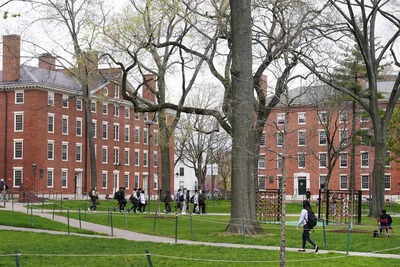Harvard vs Caltech: Which US university sets higher academic standards?

The QS World University Rankings 2026 have once again showcased the remarkable standing of two of America’s most prestigious universities—Harvard University, ranked 5th globally, and the California Institute of Technology (Caltech), ranked 10th globally. Both institutions consistently place among the top 10 universities worldwide, yet they represent two very different academic paradigms. Harvard, with its expansive interdisciplinary approach and global reach, is renowned for its broad academic excellence and powerful alumni network. Caltech, comparatively smaller but intensely focused, excels in delivering cutting-edge science and engineering education coupled with exceptional faculty-student interaction.As prospective students, educators, and industry leaders evaluate these elite universities, understanding their strengths and differences in key areas like employment outcomes, learning experience, and academic reputation is essential. This article breaks down these aspects to offer a clear picture of what each institution offers in 2026.
Harvard vs. Caltech: Parameter-wise comparison
Here is how both the universities performed in QS World University Rankings 2026:
Harvard’s employability leads, Caltech falls short
Harvard University shines with a perfect score of 100/100 in QS’s employment outcomes metric, showcasing the exceptional career trajectories of its graduates across diverse sectors such as business, law, healthcare, academia, and public service. This success is supported by Harvard’s extensive and influential global alumni network, robust career services, and strong employer demand worldwide. Graduates benefit from ample internship opportunities, mentoring, and placement support, which help maintain Harvard’s dominance in global employability.Caltech’s employment outcome score of 49.1/100 is significantly lower but reflects the institution’s specialized nature and smaller graduate cohort. Many Caltech alumni pursue research-heavy careers, postdoctoral studies, or academia, sectors not fully captured by QS employment metrics. Despite the lower score, Caltech graduates are highly sought-after in elite STEM industries, holding positions in leading tech firms, government labs, and research institutes.
Learning experience: A close competition
Harvard provides a large, dynamic academic environment with over 20,000 students, offering broad interdisciplinary programs and extensive campus resources. Students have access to world-class libraries, museums, and a diverse faculty renowned for scholarship across the humanities, social sciences, STEM, and professional schools. Its faculty-student ratio score of 96.3/100 ensures strong academic support, although the large size means faculty interaction may vary depending on program and level.Caltech offers a markedly different learning experience centered on a small, focused community of fewer than 3,000 students. It boasts the best faculty-student ratio worldwide (100/100), enabling close mentorship and collaborative research opportunities from early in the academic journey. The institute’s culture emphasizes hands-on, intensive STEM education, fostering innovation and deep specialization rarely matched elsewhere.
Academic reputation: Harvard’s influence leads the way
Harvard University holds an unmatched perfect 100/100 score in academic reputation, underscoring its longstanding global leadership in research, teaching, and thought leadership across an extraordinarily wide range of disciplines. Harvard’s faculty include Nobel laureates, Pulitzer Prize winners, and global experts whose work influences fields from medicine and law to business and the arts.Caltech commands a stellar reputation with a score of 98.3/100, especially within STEM disciplines like physics, chemistry, and engineering. Despite its smaller size, Caltech consistently produces groundbreaking research and fosters a culture of scientific excellence, positioning it as a top destination for students aiming to contribute to global scientific advancement.
Global diversity and international outlook
Caltech has a higher percentage of international students (79.8 vs. Harvard’s 69), making it more globally diverse on campus. It also features a strong representation of international faculty. However, its International Research Network score of 65.5 falls short compared to Harvard’s impressive 99.6, indicating Harvard’s broader collaborative reach across global institutions.
Sustainability and global engagement
In QS’s growing emphasis on sustainability, Harvard features prominently with an estimated 84.4/100, reflecting its commitment to green campus initiatives, climate research, and sustainability-focused programs.Caltech is deeply involved in climate and planetary sciences but hasn’t been featured prominently in QS sustainability rankings. However, it leads numerous environmental engineering initiatives and has partnered with NASA on projects addressing Earth’s changing systems.
Campus culture at a glance
Harvard’s large and diverse campus fosters a vibrant and dynamic student life, with over 20,000 students participating in hundreds of clubs, cultural organizations, and events. The university’s rich history and global reputation attract students from varied backgrounds, creating a multicultural environment where interdisciplinary collaboration flourishes. Beyond academics, Harvard offers numerous opportunities in arts, sports, leadership, and activism, making campus life bustling and multifaceted.Caltech, with its smaller student body of under 3,000, offers a more intimate and tightly-knit community. The campus culture emphasizes collaboration, innovation, and intellectual curiosity within a focused STEM environment. Students often form close bonds through research projects, hackathons, and group studies, supported by strong faculty mentorship. While Caltech’s campus is quieter, its community spirit and shared passion for science and technology create a uniquely supportive atmosphere.Both universities rank among the best in the world, but serve different academic profiles. One offers breadth and tradition; the other, depth and innovation.





